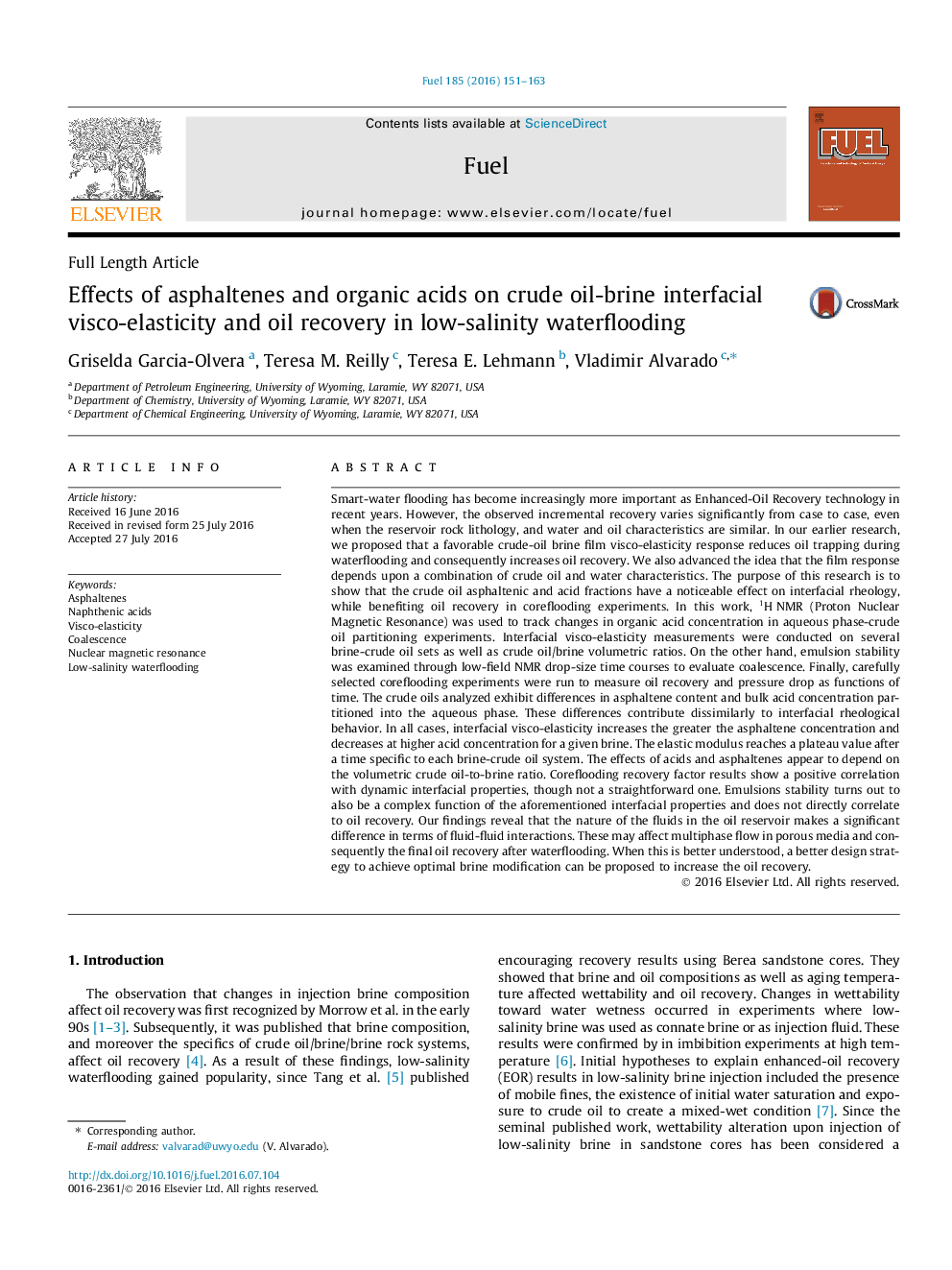| کد مقاله | کد نشریه | سال انتشار | مقاله انگلیسی | نسخه تمام متن |
|---|---|---|---|---|
| 204886 | 461088 | 2016 | 13 صفحه PDF | دانلود رایگان |
Smart-water flooding has become increasingly more important as Enhanced-Oil Recovery technology in recent years. However, the observed incremental recovery varies significantly from case to case, even when the reservoir rock lithology, and water and oil characteristics are similar. In our earlier research, we proposed that a favorable crude-oil brine film visco-elasticity response reduces oil trapping during waterflooding and consequently increases oil recovery. We also advanced the idea that the film response depends upon a combination of crude oil and water characteristics. The purpose of this research is to show that the crude oil asphaltenic and acid fractions have a noticeable effect on interfacial rheology, while benefiting oil recovery in coreflooding experiments. In this work, 1H1H NMR (Proton Nuclear Magnetic Resonance) was used to track changes in organic acid concentration in aqueous phase-crude oil partitioning experiments. Interfacial visco-elasticity measurements were conducted on several brine-crude oil sets as well as crude oil/brine volumetric ratios. On the other hand, emulsion stability was examined through low-field NMR drop-size time courses to evaluate coalescence. Finally, carefully selected coreflooding experiments were run to measure oil recovery and pressure drop as functions of time. The crude oils analyzed exhibit differences in asphaltene content and bulk acid concentration partitioned into the aqueous phase. These differences contribute dissimilarly to interfacial rheological behavior. In all cases, interfacial visco-elasticity increases the greater the asphaltene concentration and decreases at higher acid concentration for a given brine. The elastic modulus reaches a plateau value after a time specific to each brine-crude oil system. The effects of acids and asphaltenes appear to depend on the volumetric crude oil-to-brine ratio. Coreflooding recovery factor results show a positive correlation with dynamic interfacial properties, though not a straightforward one. Emulsions stability turns out to also be a complex function of the aforementioned interfacial properties and does not directly correlate to oil recovery. Our findings reveal that the nature of the fluids in the oil reservoir makes a significant difference in terms of fluid-fluid interactions. These may affect multiphase flow in porous media and consequently the final oil recovery after waterflooding. When this is better understood, a better design strategy to achieve optimal brine modification can be proposed to increase the oil recovery.
Journal: Fuel - Volume 185, 1 December 2016, Pages 151–163
